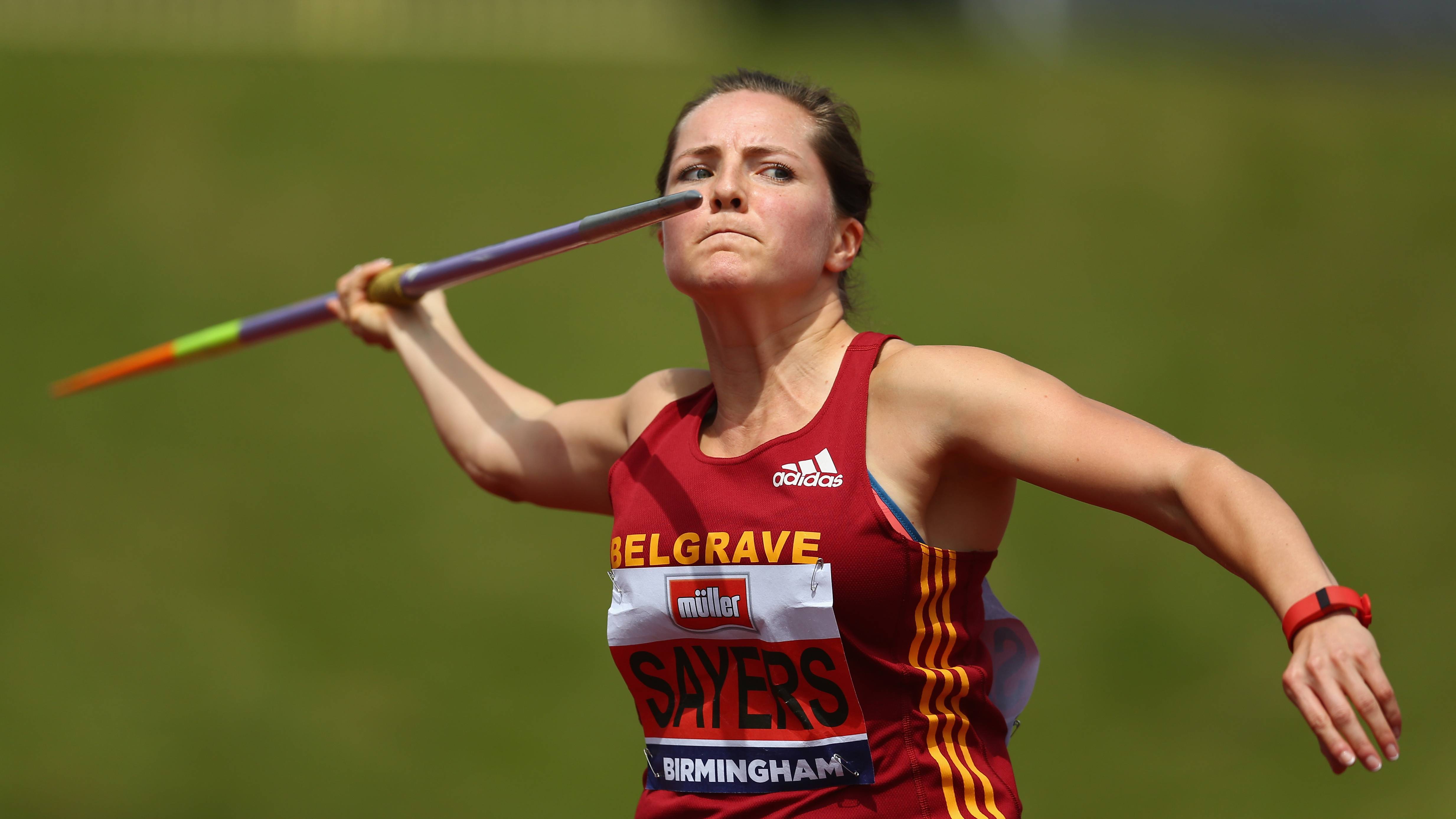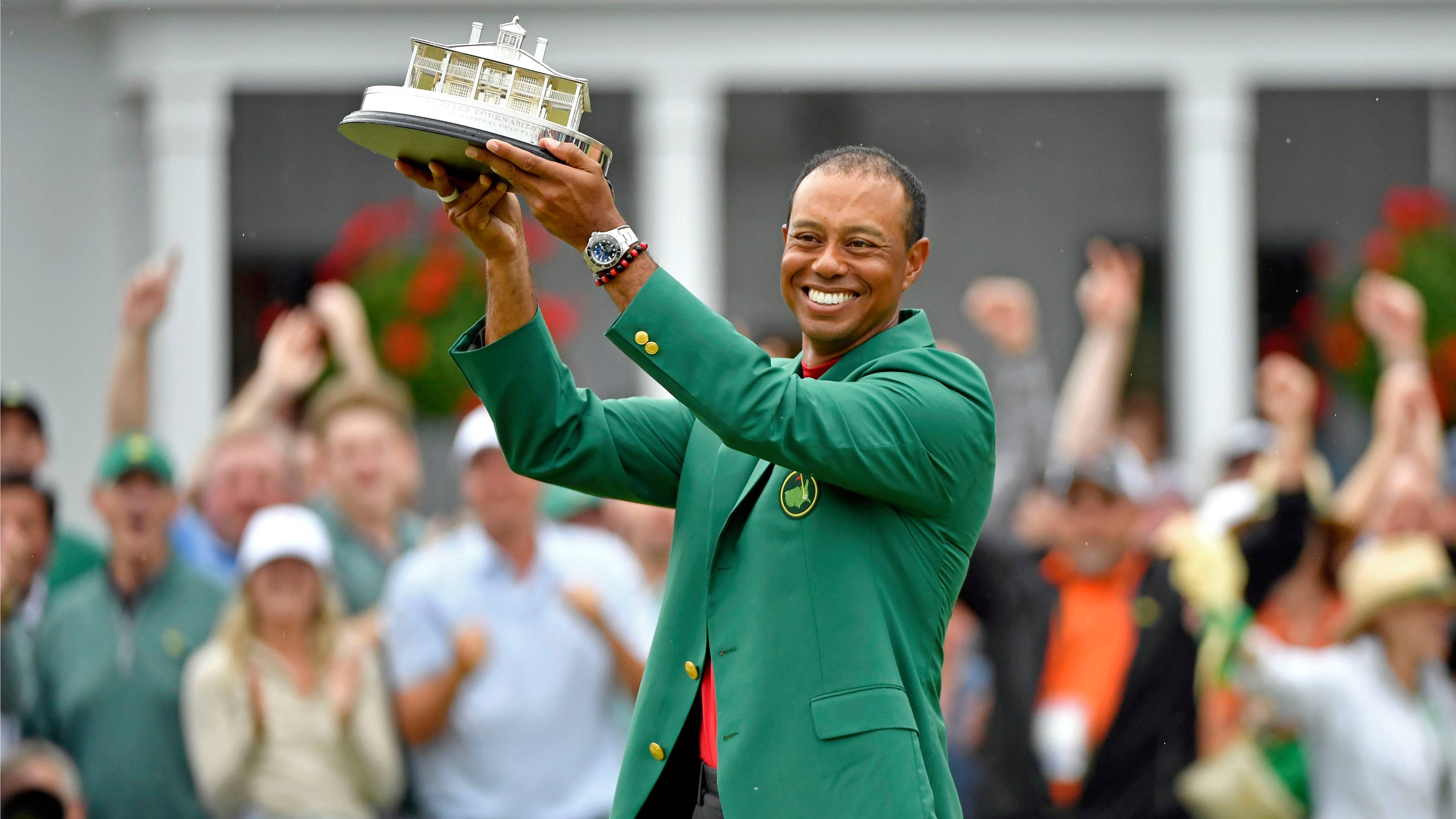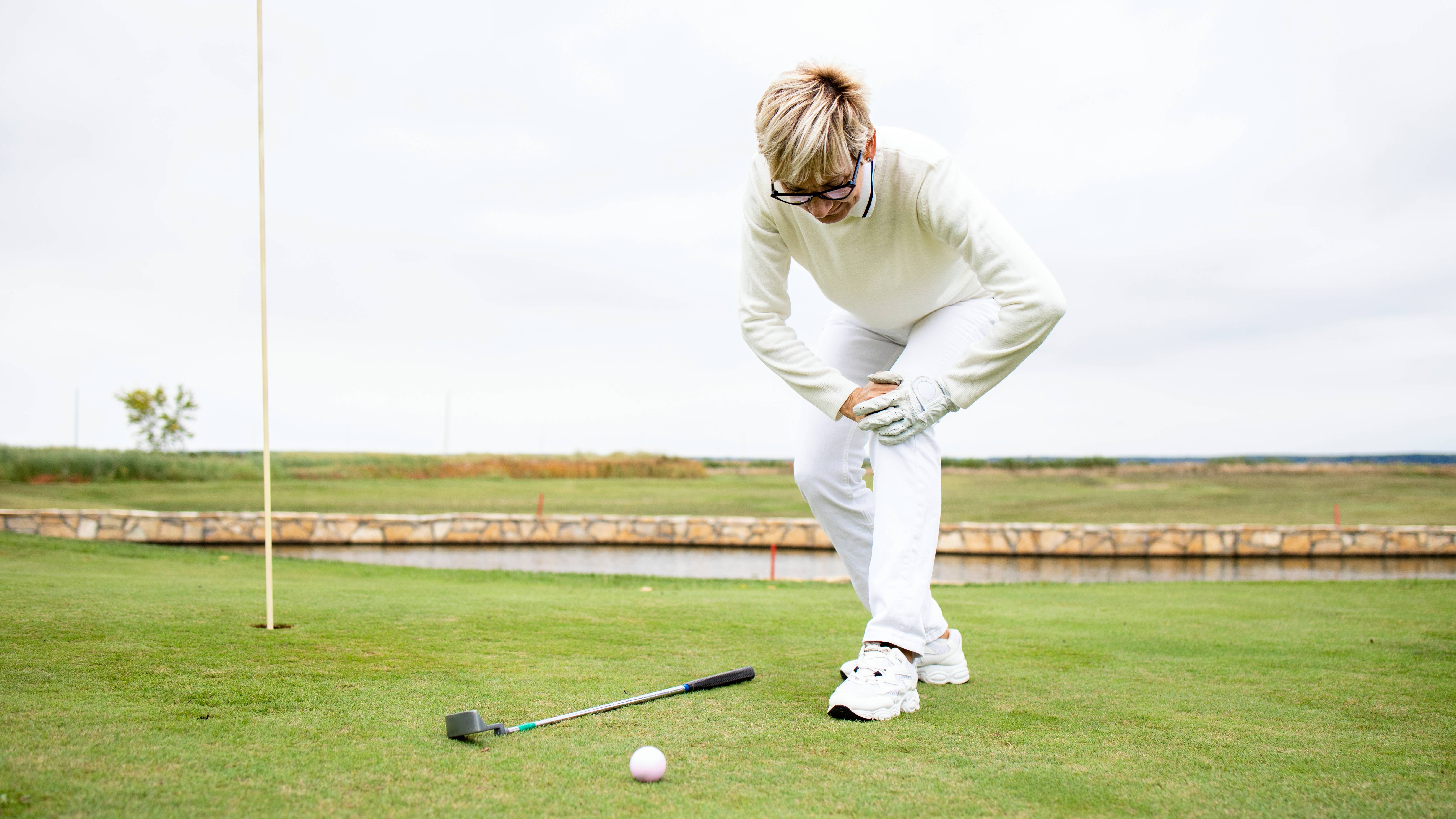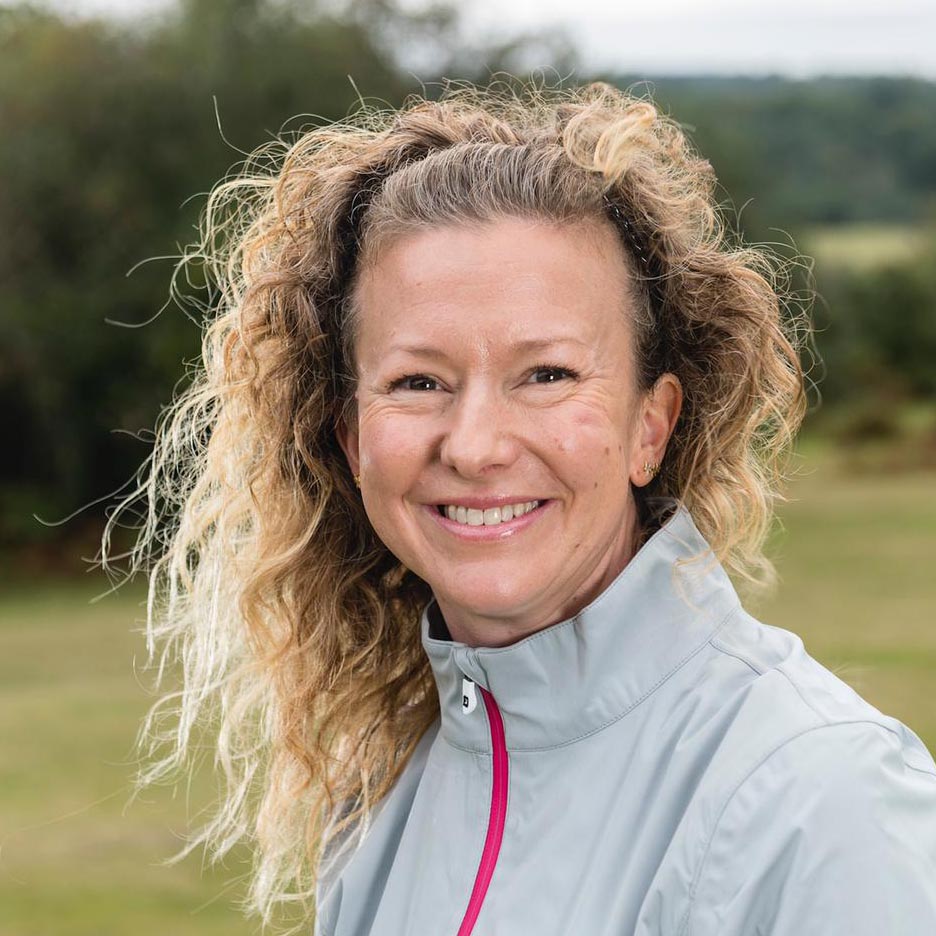Struggling On The Course After Injury? (The 1 Mental Mistake)
PGA Professional Katie Dawkins on rebuilding trust in your swing after injury


In my experience as a golf coach, pupils with injuries or physical limitations come to lessons presenting particular swing faults. Their bodies are protecting themselves because of the pain and the limited mobility that a poorly knee or hip presents.
When those physical limitations are removed or improved that doesn’t necessarily mean that the swing fault disappears. In fact, our minds hold on to the blueprint of our golf swing more than we think.
Just because your back doesn’t hurt anymore doesn’t mean that you’re not going to extend early in your golf swing to protect it.
It’s really interesting that muscle memory or the blueprint of our golf swings is so ingrained into our subconscious that even when there is no pain present, in the mind the body still tells us to “be careful, don’t overdo it, this hurt last time.”
Former Olympic javelin medalist Goldie Sayers said, “There’s definitely a return to the competition phase of rehabbing an injury that’s a bit of an art, as not that much actually mimics the skill you’re returned to when done at speed. I always found visualisation overcomes a lot of the subconscious self-protection of operations and injuries.”

Former Olympic javelin medallist Goldie Sayers recommends visualisation for self protection
Sayers attributes a higher percentage of fellow athletes not returning to compete due to the fear of re-injury, lower confidence, and decreased motivation.
I find this fascinating and often it’s a journey of rebuilding the trust within us that helps get a golfer back on track. Many golfers assume their golf will immediately return to its best when the pain is gone.
Subscribe to the Golf Monthly newsletter to stay up to date with all the latest tour news, equipment news, reviews, head-to-heads and buyer’s guides from our team of experienced experts.
This isn’t always the case. Like having physiotherapy and rehabilitation exercises to get your body back in shape after an operation or an injury, the same will apply to your golf swing.
You need to not rush in. You need to rebuild it as physical capability has changed. There’s a chance you’ll have to make some substantial changes. Potentially you’ll swing it totally differently.
That’s why lessons are so important. Your PGA professional can give you drills to help to rebuild confidence, and this isn’t about rebuilding the muscles. This is about regaining the trust in your body's ability to move better.
Now we are not all Tiger Woods, but he's a great example of an athlete who has come back after multiple surgeries and smashed it out of the park. Most famously returning after a spinal fusion surgery to win the 2019 Masters.

Tiger Woods, 2019 Masters champion
I asked a few golfers whether they’d experienced the best golf they’ve ever played once they’ve come back after injury. Or did they decide not to come back at all?
One of my pupils had such a sore knee before having major surgery. His game was really suffering so he quit and hasn’t hit a ball since while he rehabilitates. He admits he’s scared of hitting his first ball as it has skewed his swing so much and resulted in not just pain but poor shots.
Memories of his worst playing season is still there, he's trying to distinguish between the correct alignment and posture from his pain avoidance improvised version, which is fuelling his self.doubt. Compounded with does he swing safe or swing normal and the fear factor of not incurring further injuries is immense.
He’s being careful not to dive in headfirst, managing his expectations is high on the agenda. Almost starting from scratch to get back down to scratch.
Juliet Braxton was a single figure golfer who was a keen skier as well as a great golfer. Then her body decided to throw her a curveball and her golf took a back seat. But after 15 years of various surgeries and operations and being recommended not to play any sports other than walking, Braxton is back playing golf.

“My first few games were truly dreadful as I think I was nervous of harming myself and I was also not as fit as I previously was. I came remarkably close to giving up.
“I decided to have lessons and although there was a marked improvement I found it extremely hard to regain my confidence. My previous handicap was 7 and I was very consistent, but now some of this consistency seems to have left me.
Three years on, I am playing off 15 which is fine, but I still feel I have more to give. During my lessons, my confidence is good, but when I’m on the first tee I feel shaky and unsure of myself. I am hoping time and practice will help to improve my confidence and my consistency will return.”
Jo Florance is back playing golf after her second knee replacement and admits she feels as good as ever. Her golf hasn’t deteriorated and she doesn’t feel phased about playing 18 holes anymore.
Florence’s friend is waiting for a hip replacement. She’s in visible pain walking, but just loves being out on the golf course. Her husband hasn’t looked back since having knee replacements, and although he’s not playing better golf, pain-free golf carries so much more enjoyment.

People with different mindsets come back from injury differently. Are you a golfer who has found new joy after returning to the game after injury, not just because you are pain-free, but because your approach to the game has changed? Are you playing better since having surgery? Let us have your comments below.
More reserved golfers, those who aren’t risk-takers will hold back and perhaps be more cautious. The confident, determined and more bullish players will say, “Hey, I’ve got a new knee. I’m invincible.” They’ll commit to their swing and trust new joints without worrying about doing themselves damage. These golfers will fly after surgery, but can also come back too soon.
The golfers I know who have returned to the game after injury have been through extensive rehab and many have worked out more than they’ve ever done before.
We know that exercise releases happy endorphins and these comeback kings and queens have a big smile on their faces. Those natural painkillers (endorphins) are at work and let’s face it, when we’re fit and healthy we feel great so the chances of coming back after injury and playing better golf could actually be quite high.

Katie is an Advanced PGA professional with over 20 years of coaching experience. She helps golfers of every age and ability to be the best versions of themselves. In January 2022 she was named as one of Golf Monthly's Top 50 Coaches.
Katie coaches the individual and uses her vast experience in technique, psychology and golf fitness to fix problems in a logical manner that is effective - she makes golf simple. Katie is based in the South of England, on the edge of the New Forest. An experienced club coach, she developed GardenGOLF during lockdown and as well as coaching at Iford Golf Centre, The Caversham- Home of Reading Golf Club and Salisbury & South Wilts Golf Club.
She freelances, operating via pop-up clinics and travelling to clients homes to help them use their space to improve.
She has coached tour pros on both LET tour and the Challenge Tour as well as introduced many a beginner to the game.
Katie has been writing instructional content for magazines for 20 years. Her creative approach to writing is fuelled by her sideline as an artist.
Katie's Current What's In The Bag
Driver: TaylorMade Qi10 9degrees.
Fairway: TaylorMade Qi10 5wood
Hybrid: TaylorMade 4 & 5
Irons: TaylorMade 770 6-AW
Wedges: TaylorMade Tour Grind 4 54 & 58
Putter: TaylorMade Tour X 33"
Favourite Shoes: FootJoy HyperFlex with Tour Flex Pro Softspikes on the course.
You must confirm your public display name before commenting
Please logout and then login again, you will then be prompted to enter your display name.